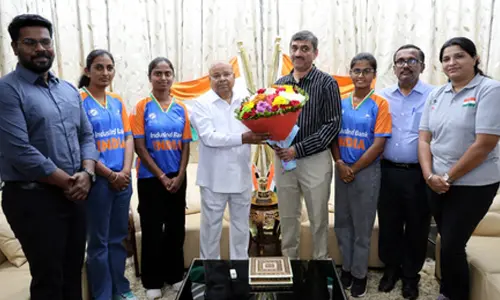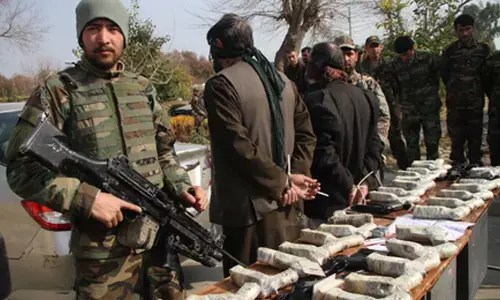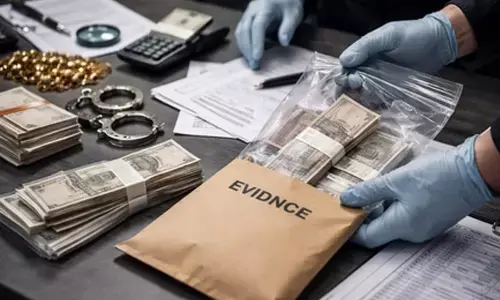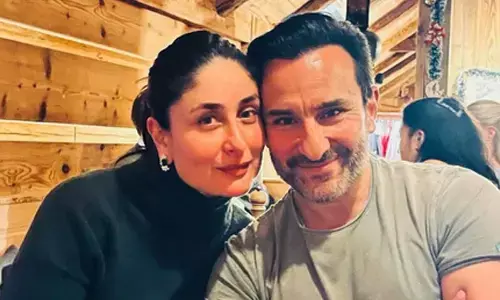Hyderabad: Where History Comes Alive

Like every year, International Museum Day is being celebrated across the globe on May 18 (Thursday). The well-thought of theme for the 2023 edition of the International Museum Day is Museums, Sustainability and Well-being. In a fitting gesture, an impressive array of programmes have been lined up in sychronisation with the celebrations globally. It is an open secret that efforts are being made to raise awareness about the role of museums in society and their contribution to education, cultural exchange, and heritage preservation. It is on this day people get an opportunity to appreciate the rich cultural heritage of different communities while promoting lifelong learning and creativity.
Hyderabad
Heritage Museum Gunfoundry, Hyderabad
The Centenary Heritage Museum, located in Gunfoundry, Hyderabad, is a captivating destination for history enthusiasts and art lovers. The museum stands as a testament to the rich cultural heritage of the region.
Its diverse collection showcases artefacts from various periods, including terracotta, stucco, and iron objects, offering a glimpse into the prehistoric and early historic eras
Also features intricately carved temple sculptures and door-jambs, providing a fascinating insight into the region’s architectural and artistic traditions
In 1914, the Department of Archaeology was established by H.E.H. Nawab Mir Osman Ali Khan, the VIIth Nizam, and it is currently known as ‘The Department of Heritage Telangana.’
The appointment of Prof. Ghulam Yazdani as the first Director of the department was made on the recommendation of the Director General of Archaeology of India
Upon arriving in Hyderabad on April 26, 1914, Yazdani swiftly organised his office and provided the government with a clear understanding of his duties
Srisailam Pavilion
Located within the premises of the Directorate office, Srisailam Pavilion was set to exhibit ancient artefacts and artworks recovered from the submerged regions of Yeleswaram and Srisailam reservoirs in the Krishna valley Additionally, it served as a repository for various collections unearthed within the erstwhile Andhra Pradesh State
The ground floor of the building showcases a diverse range of objects and antiquities. These include terracotta figurines from various locations such as Kondapur (Sangareddy), Peddabankur and Dhulikatta (Pedapalli), Pochampad (Nizamabad), Serupalli and Gollathagudi (Mahbubnagar), Yeleswaram (Nalgonda)
The Early Historic Gallery
Home to an impressive collection of invaluable antiquities that have been recovered from various excavations. One of the notable highlights of the gallery is the display of beads from the Kondapur excavations in Medak district, which were extensively studied by K N Dikshit
The artifacts were excavated from significant sites such as Kotilingala (Jagtial), Pedabankur (Peddapalli), Dupatta (Karimnagar), and Neelakondapalli (Khammam).
The Gallery offers a fascinating glimpse into the rich historical and cultural heritage of the region
Dvara sakha
Within the museum, one can find Dvara sakha, (black basalt stone) excavated from Pragatur, Mahbubnagar district of the 9th-10th Century AD, the Chalukya period in open courtyard.
The door jamb of Sri Varada Raja Swamy temple consists of eight pieces in two frames. The outer frame has two verticals depicted with standing goddess ganga figure, yakshini figure and floral designs, and a horizontal depicted with rama pattabhi shekam ceremony attended by Vanaras and sages.
The inner frame consists of one still with floral designs, two verticals with Vaishnavate dwarapalas and yaksha figures, two horizontals, one horizontal is with gajalakshmi motif and over which is another shows with Bharavaka yakasha figures.
Makara torana
Excavated from Dichpalli, Nizamabad district from the 9th -10th Century AD, the Chalukya period consists of three parts. Two vertical pillars depicted Vaishnavate, dwarapalas (unfinished) over which are inverted lotus kumuda and square phalakas (broken). An arch shaped torana rested over the phalakas shows two seated mythical makaras with a floral garland emerging art of their mouths on either side merged at the centre with Kirthimukha (vyala) with wide open mouth issuing floral designs from its mouth.
The State Museum, Hyderabad
The State Museum located in Public Gardens, Hyderabad, is known for being one of the most significant repositories of antiquities and art objects in India
The museum showcases Indo-Islamic architecture with its distinctive features such as subtle domes, high arches, stylistic windows, and projected eaves.
Egyptian mummy
One of the main highlights of the museum is its Egyptian mummy, which is approximately 2,353 years old. According to reports, the mummy was brought to Hyderabad by the son-in-law of VI Nizam Mahbub Ali Khan, who then donated it to the last Nizam, Mir Osman Ali Khan. The Nizam reportedly acquired the mummy for a sum of 1000 pounds.
The museum also boasts a significant gallery dedicated to Buddha, showcasing a wide variety of archaeological artifacts from the Nizam era and the Kakatiya dynasty. These artifacts provide valuable insights into the history and cultural significance of the region.
Coins of the Satavahana period: The museum has a collection of coins dating back to the Satavahana dynasty, providing a glimpse into the region’s ancient economic and numismatic history.
Arms and armor gallery: The museum features a collection of arms and armor, presenting a historical perspective on weaponry and warfare.
Sculpture Garden Gallery
In this gallery, visitors can explore 93 sculptures and architectural items made from various stone media. The artworks on display date from the Satavahana period (2nd century B.C.) to the Post Vijayanagara period (17th century A.D.).
Provides a unique outdoor setting where visitors can appreciate and study these historical artifacts.
Within the Sculpture Garden, notable items include two four-pillar mandapas (hall or pavilion-like structures) from the Kakatiya and Vijayanagara times. There are also Veergals (Hero Stones), Panchaloha (alloy of five metals) sculptures, iron cannons, and a wooden chariot that has been shifted from Jetprole village. These artifacts contribute to the rich and diverse collection of the State Museum, offering visitors a chance to explore the artistic and architectural heritage of the region in different mediums and time periods.
SITE MUSEUMS IN TELANGANA
A site museum is a type of museum that is specifically located at or near an archaeological or historical site. It is designed to showcase and interpret the artifacts, structures, and cultural heritage associated with that particular site
It plays a crucial role in preserving and presenting the history, archaeology, and significance of the site to visitors.
Few historical site museums Qutub Shahi Site Museum, Hyderabad
Qutub Shahi Site Museum is located at the Qutub Shahi Tombs in Hyderabad. It showcases artifacts and information related to the Qutub Shahi dynasty, their architecture, and the cultural heritage of the region.
Khazana Building Museum, Hyderabad
Khazana Building Museum is situated in Golconda, Hyderabad. It houses a collection of artifacts that showcases the history and treasures of the Golconda Fort, including arms, armour, coins, jewellery, textiles, and other items of cultural and historical significance.
Multipurpose Cultural Complex Museum, Hyderabad
MPCC Museum in Hyderabad exhibits a diverse collection of art and artifacts that reflect the cultural heritage and history of the region, providing visitors with insights into various aspects of local art and craftsmanship.
Kolanpaka Museum, Nalgonda
Kolanpaka Museum in Nalgonda showcases a range of sculptures, artworks, and historical artifacts, primarily focusing on the Jain heritage of the region, offering visitors a glimpse into its rich cultural and artistic traditions.
Alampur Museum, Jogulamba Gadwal
The Alampur museum, founded in 1952, is located near the renowned Nava Brahma temples. It houses a collection of 124 stone sculptures, 26 inscribed slabs, and 64 individual sculptures dating from the 6th to the 16th century AD. These artifacts represent the artistic heritage of the Kakatiya, Chalukya, and Vijayanagara dynasties.
Buddhavanam Museum, Nagarjunasagar, Nalgonda
The Buddhavanam Museum, situated in Nagarjunasagar, showcases a diverse range of artifacts related to Buddhism. It offers visitors insights into the life of Lord Buddha, Buddhist philosophy, and the archaeological findings from the surrounding area, providing a rich cultural and educational experience.














